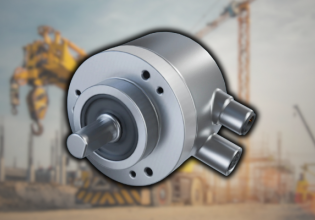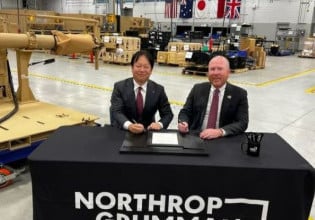UL Has Certified a New Siemens Motor Drive With Simulation and Digital Twins
In a first for the industry, one aspect of a Siemens controller has been certified by UL Solutions using a digital twin representation This may pave the way for new methods of product verification.
For the first time in the history of the United States, an industrial component was certified by a third-party entity using a digital twin representation that integrated seamlessly with physical tests.
UL Solutions recently granted certification to a product using a digital twin to model how the product would behave under different circumstances. Satisfied with the results, Siemens' new SINAMICS G220 drives were granted UL Certification.
Specifically, the factor evaluated by the digital twin representation in this certification conformed to UL 61800-5-1, which specifies temperature rise over run time. While this notable milestone did not represent an exhaustive test of all motor drive operation performance, it certainly constitutes an important step in digital verification.
Third-Party Certification
When a new product is designed, the end user must ultimately evaluate whether the product will meet their needs. Some of the important questions they might ask are, “Is this product safe?” “Does it work as advertised?” And other important inquiries. Most notably, for life-changing, expensive purchases, the consumer will seek out advice to answer these questions. However, simply asking the manufacturing company will only yield biased answers. “Yes, of course it’s safe!” Enter third-party certification.
UL Solutions, formerly known as Underwriters Laboratories, tests various equipment to ensure its safety in operation. They provide a certification process for a myriad of products, covering everything from extension cords to the most advanced process and motion controllers. Nearly every power product for sale in the US contains a UL stamp of approval on the label or casing.
The tests are conducted independently from the manufacturer (hence, third-party), meaning it is difficult for the manufacturer to bias them. Once the product has been certified, it can bear the UL stamp of approval, and consumers are more confident in the product. UL Solutions is one of many consumer-trusted third-party organizations.

History made: the first ever third-party certification handed from UL Solutions to Siemens using a digital twin to test various factors (picture shows Dirk Vielsaecker, vice president of R&D for Digital Industries and Motion Control at Siemens, and Jennifer Scanlon, president and CEO of UL Solutions). Image used courtesy of UL Solutions
Downsides of the Certification Process
Certification is expensive and time-consuming. Often, the manufacturer must send multiple products for testing, and the tests themselves can take a long time. If a product does not pass, the results are sent back to the designer, and they tweak the design, sending the next batch of prototypes to the certification organization.
Siemens wanted to have their latest controllers certified by UL Solutions. A new process was implemented for testing certain factors digitally, rather than needing to rely solely on traditional physical tests. A digital twin was created and sent to UL Solutions and run through a series of simulations to determine the safety and workability of these controllers under the thermal test parameters for safety.
The Upsides of Digitization
The creation of a digital twin means products can be more quickly and efficiently brought to market. Typically, certification requires building specialized prototypes, sourcing suppliers, sub-assembly manufacturers, and so on.
When a design is rejected, or even in the time it takes for the design to be certified, these suppliers can change, retool, etc. With a digital twin, the design can be evaluated before the physical device is even built. Changes can be made to CAD drawings, software code, bills of material, and other important design documentation without the major time setback that physical revisions often incur.
Furthermore, this reduces some of the barriers to entry for startup shops that may not have the resources to source supplies and assemblers. Instead, they can submit a digital twin and get the certification before locating the manufacturers, suppliers, raw materials, and labor for scaling up.
The end result is that safer products reach the hands of the consumer much more quickly.
The Future of Certifications
Standardization and certification will always be an important part of innovation. The use of third parties to ensure the safety of a product cannot be underestimated. The digital certification process developed by Siemens and UL Solutions means more designs can be investigated much more quickly, ultimately leading to more products on the market and in the hands of consumers.






